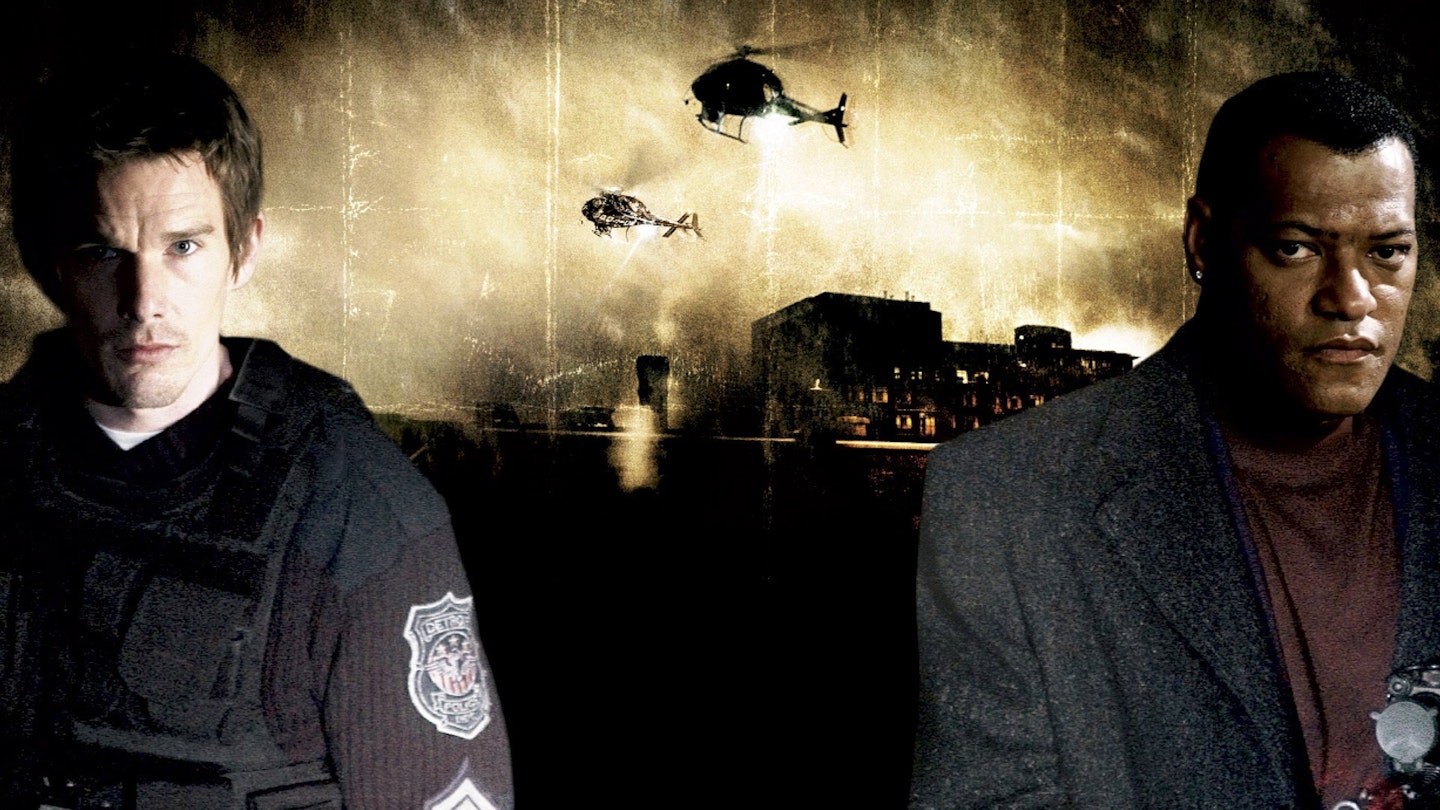At his best, no one musters localised claustrophobia like John Carpenter. Especially when he’s not distracted by a budget of any sort. Working for next to zero for this second film, he openly crossed Rio Bravo with Night Of The Living Dead, for this highwire urban Western, pitching street hoodlums against a paltry crew of low-level police officers and high-ranking criminals headed for death row.
The beauty of the piece lies in Carpenter’s succinct screenwriting. There is no slack, no need to keep iterating plot points, everything works within his exaggerated comic book universe governed by a very real violence. Why would a crew of death row inmates be in the heart of the LA ghetto? Why, because they are in transit and one falls sick, so the transit officer stops at the nearest police station.
The pace, at the start, is slow, setting a mood of hot, irritable streets brewing tension (this was a long time before the Rodney King riots and looks nastily prescient). A gang slaying is the touch paper, and once all his pieces are in place, Carpenter crosses over into bloody action — an ice cream van killing is shockingly memorable — so skilfully choreographed it totally belies the limitations of the sets and no-name actors.
Since remade with bigger names (Ethan Hawke and Laurence Fisburne) and much more money, replacing the sweltering heat with snow, its ordinariness just made the original stand out even more. Cloying dialogue aside, the twists and transitions — especially the conundrum of having to turn to prisoner Napoleon Wilson for help — are an object lesson in masterful tension. Most modern directors, including an older John Carpenter long past his best, would do well to learn something about simplicity. When you care about the characters, as we do this clutch of no mark cops and cold killers, and you believe in their nightmare, half the work is done. Carpenter’s thriller also covers the other half with just as much ease.
